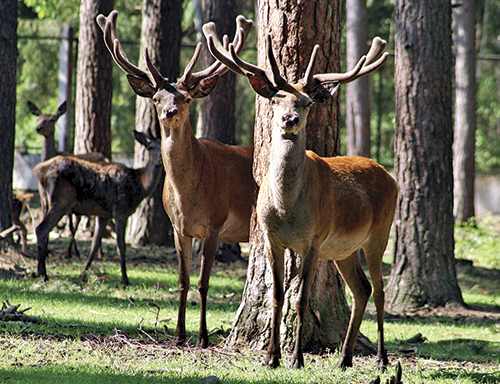
This year, Belarus celebrates 70 years since its liberation from Nazi occupation, thanks to the bravery and sacrifice of Red Army soldiers and partisans. We have enjoyed seven decades of peace. Partisans forged victory in our Belarusian forests between 1941 and 1944, hiding by day among pines and spruces, as well as on the marshes, and fighting by night. Our great forests and pushchas, preserved since ancient times, provided reliable shelter. They retain memories of those events, as you can read in Birthplace of Victory.
Pondering the forests, Sincere Scientific Interest explores the need to protect forests from radiation, cultivating ‘healthy’ mushrooms and transgenic trees, and developing unspoiled eco-routes. Gomel was chosen to host the National Academy of Sciences’ Forest Institute, as the South-East is the most wooded part of Belarus. Its work is wide and various, but its efforts to alleviate the damage caused by the catastrophe at the Chernobyl nuclear power station must be the turning point in its biography. The explosion raised radiation in the forests of the Gomel and Mogilev regions, bringing urgent need for emergency strategies.
Of course, scientists have now accumulated precious experience in how best to eliminate radioactive influences, using new technologies and equipment, for which patents have been received.
The ecology of a forest is vastly intricate, providing a habitat not just for plants and animals but for people. Most of the residents of Kamenyuki village work in the Belovezhskaya Pushcha National Park: as foresters, excursion guides, maids, administrators and cooks. Everything in Kamenyuki is connected with the forest: birth, studies and leisure. How can it be otherwise? Children are taught about the forest from their earliest days.
The Kamenets District is known for being mostly covered by the Belovezhskaya Pushcha National Park but also boasts the most agro-estates in the Brest Region: over 40. This is despite having a significant portion of territory closed to the public. When you are on the border, you have to have your passport with you.
Located at the crossroads of Belarus and Poland, the village of Kamenyuki is the administrative centre of the National Park, and the focal point for tourists from far and wide. Those keen on nature come to see wild animals in open-air cages, as well as to enjoy the special atmosphere of an ancient forest of pines and oaks. Father Frost’s residence also attracts great numbers of visitors, all through the year. It’s always wonderful to visit but it’s even better to live there, as the author of The Philosophy of a Forest Village asserts.
All the articles in this issue confirm that the Forest is a wonderful place and deserves to be treated with great consideration. It is generous in its gifts, so we must care for it in return. as is seen from the article with the same title, offered in our magazine.
By Viktor Kharkov











